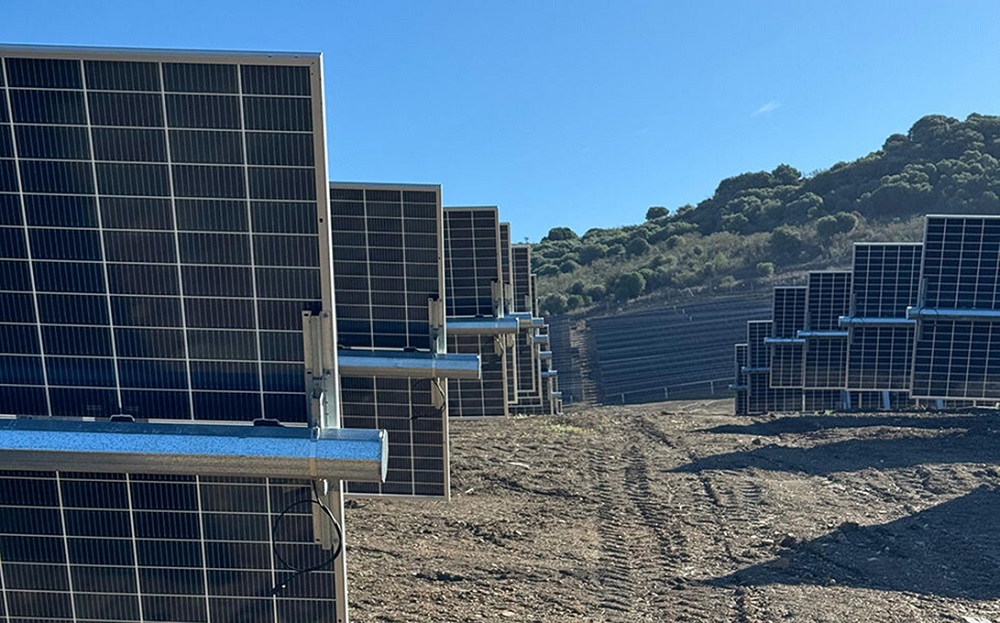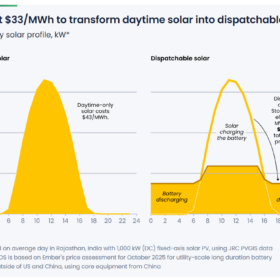Solar tracker manufacturer PV Hardware (PVH) has added terrain-following support to its AxoneDuo Infinity tracker the ability to accommodate up to 2° of post-to-post variation to improve the viability and cost-competitiveness of sloped, uneven and rocky building sites.
Such trackers are envisioned for use in sensitive ecological zones, agrivoltaics, and regions with strict environmental permitting standards.
“With flat, buildable land becoming scarcer, especially in high-potential states like California, Texas, and the Midwest, developers need smarter solutions to meet rising energy demands without increasing environmental impact or construction costs,” said the company in a statement.
“The terrain-following solar trackers, based on PV Hardware’s flagship dual-row tracker, AxoneDuo Infinity, are available in the U.S. market and deployed worldwide,” a company spokesperson told pv magazine.
The 2° slope tolerance exceeds the 1.5° to 1.75° tolerance of typical trackers, according to the company. It added that the technology enables shorter piles, up to 0.7 m in length, and a shallower ramming depth, as well as reduced work related to earthworks site preparation
The AxoneDuo Infinity trackers are module-agnostic, reportedly supporting mono and dual row layouts with string configurations of 1-2-3-4 or 2+2 – 3+3. They are delivered pre-assembled and have a 75° hail stowing option.
Together, these features lead to over 40% faster installation timelines, reducing both material costs and labor requirements, according to the manufacturer.
The trackers are available via PV Hardware’s operational hub in Houston, Texas and other locations internationally.
This content is protected by copyright and may not be reused. If you want to cooperate with us and would like to reuse some of our content, please contact: editors@pv-magazine.com.








By submitting this form you agree to pv magazine using your data for the purposes of publishing your comment.
Your personal data will only be disclosed or otherwise transmitted to third parties for the purposes of spam filtering or if this is necessary for technical maintenance of the website. Any other transfer to third parties will not take place unless this is justified on the basis of applicable data protection regulations or if pv magazine is legally obliged to do so.
You may revoke this consent at any time with effect for the future, in which case your personal data will be deleted immediately. Otherwise, your data will be deleted if pv magazine has processed your request or the purpose of data storage is fulfilled.
Further information on data privacy can be found in our Data Protection Policy.